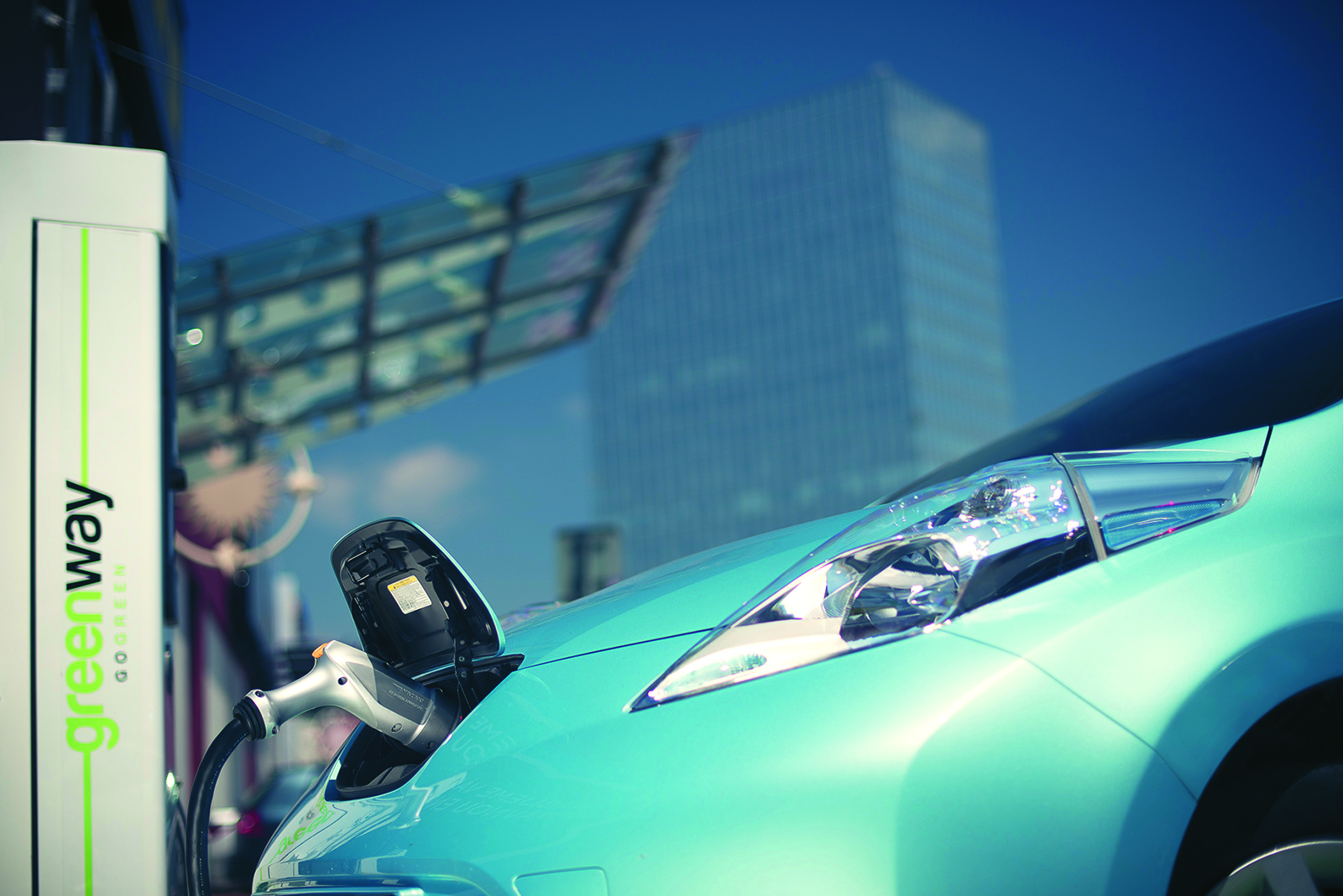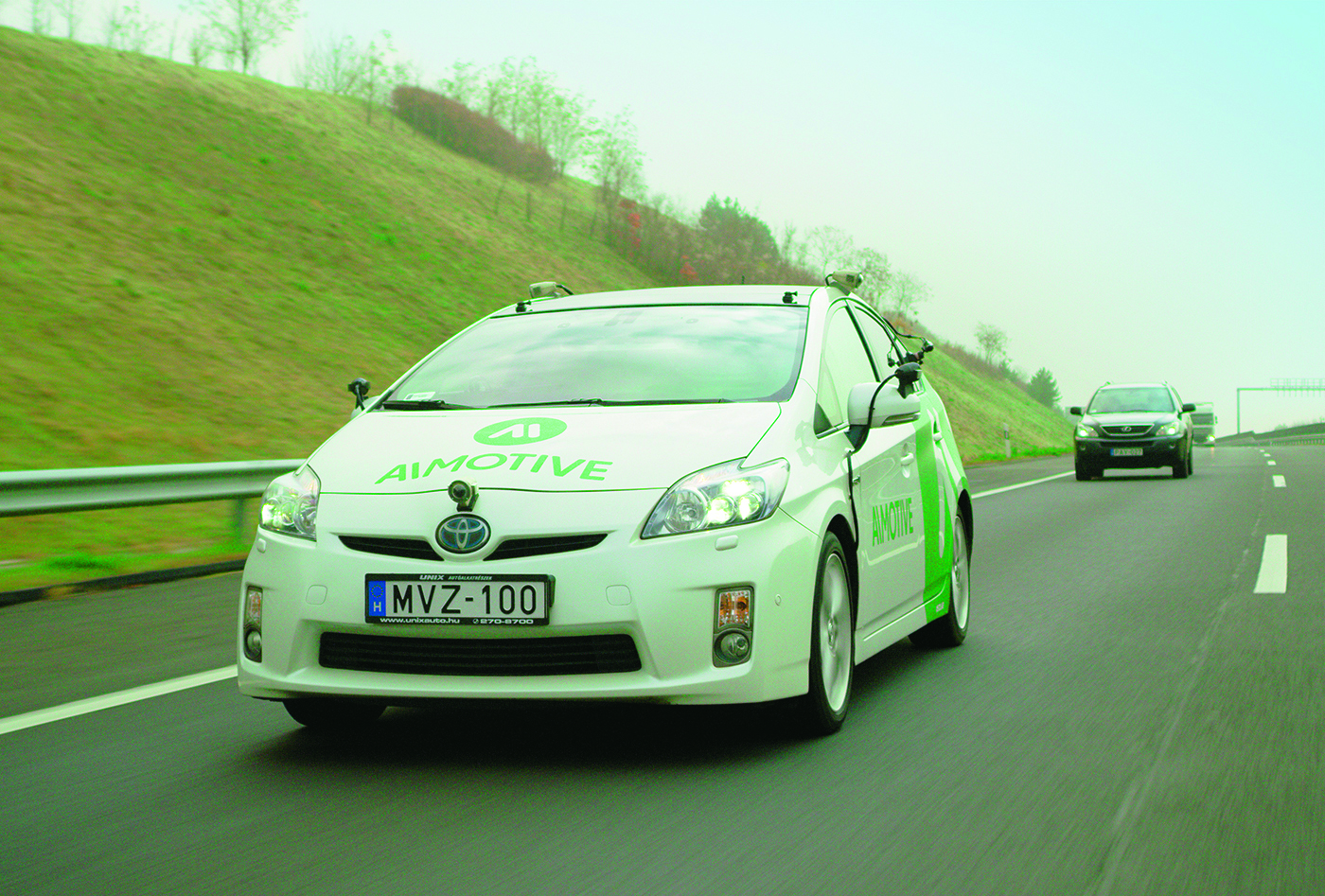Sometimes it only needs the right idea to change the world. People can invent extraordinary things not realising the extent of what they have in their hands.
This happened to the Hungarian inventor Ányos Istvan Jedlik, who invented the first rotary machine with electromagnets and a commutator, becoming in 1828 the father of electric vehicles. Unfortunately, the device had no influence on the further development of electric machines.
However, thanks to bigger players, such as Germany, the US and the UK, electric vehicles are spreading all over the world. According to the European Environment Agency, in 2010 only 700 fully-electric battery-operated vehicles (BEV) were sold in the European Union. In 2015, sales topped 150,000.
Since Mr Jedlik’s big idea, Hungary has come a long way: thanks to a 2 billion HUF investment made by the government in 2016, nearly 30,000 electric vehicles are planned to be in use in Hungary by 2020.
Hungary
Vehicle manufacturing is today one of the strongest industrial sectors in Hungary. But what makes Hungary such an ideal destination for the automotive industry?
“Cheap and flexible labour, the proximity of outbound markets, ideal market regulation, low-cost industrial sites and favourable tax incentives can be listed as factors,” Csaba Killián, CEO of the Association of the Hungarian Automotive Industry (AHAI), tells Emerging Europe.
“The easy accessibility of Hungary is often cited as one of its main advantages: it is at the crossroads of four main European transport corridors. Hungary has one of the highest motorway densities in Europe and has five international airports. The country’s location enables companies to have morning calls with Asian countries and afternoon calls with the US, which makes Hungary a preferred location for shared service centres as well,” he continues.
“On top of that, Hungary provides its workforce at an advantageous cost. The labour force totals 4.6 million (in 2017, Q1) and the unemployment rate is 4.5 per cent (in 2017, Q1) with a guaranteed monthly minimum wage for skilled workers of 161,000 forints (518 euros),” he says.
A competitive workforce however cannot be viewed without the disadvantage of low labour productivity. However, according to Mr Killián, differences in production are caused by a lack of capital intensity, and not because of the quality of the workforce.
“Moreover, players in domestic industry occupy low positions in the value chain,” he says. “The micro, small and medium-sized companies have almost the same productivity, which is half of the efficiency of larger companies. The degree of lag has considerably fallen over the 10-year-period between 2005 and 2015, the SME sector productivity level approaching large corporations with stagnant productivity.”
Foreign companies, including Audi and Mercedes, continue to invest in the country, forecasting strong growth for the vehicle production industry over the coming years.
“Within a couple of years, five trends will undermine the automotive industry, and Hungarian suppliers will have to adapt to these too,” Mr Killián explains.
“Expected trends include the spread of electric and hybrid-driven vehicles, the emergence of self-propelled cars, shared car usage, ongoing communication between cars and other objects, and the fact that new models will appear more frequently or year by year,” he says.
Poland & the Czech Republic
Hungary is not the only emerging European country playing an important role in the sector. Poland and the Czech Republic are currently considered two of the hottest hubs for the automotive industry. According to the European Automotive Industry Association (ACEA), of 230 assembly plants in Europe, 16 are located in Poland.
The Czech Republic registers the highest employment rate in the sector (3.24 per cent), above Germany (2.17 per cent) and the EU average (1.14 per cent). On the other hand, the Baltics are not showing the same trends, and Estonia has the lowest motor vehicle registration rate (only 22,429 per year) while Lithuania has no production of passenger cars.
As such, FDI is mostly concentrated in Poland and the Czech Republic.
The latest investment comes from the BMW group which is building a new proving ground facility in the Czech Republic. The site will be located in Sokolov in the Karlovy Vary region, for a total amount in the three-digit million-euro range.
“It will be the company’s first development location in Eastern Europe,” Johannes Maierhofer, head of the project in Sokolov, tells Emerging Europe. “And the BMW Group found the ideal conditions and grounds we need for vehicle testing in Sokolov.”
“As an innovation driver, we aim to offer customers the best, most emotional mobility experience and create digital connections between people, vehicles and services. At the planned proving facility in Sokolov, we will continue to advance ground-breaking topics like electrification, digitalisation and automated driving – for example, through safety-testing for assistance systems,” he adds.
Charging Ahead
With electric vehicles spreading all over central and eastern Europe, there is also a growing need for more charging stations. So far the number of charging stations in the region is tiny.
A new project wants to change that: the NEXT-E consortium will receive 18.84 million euros under the Connecting Europe Facility (CEF) to build 252 fast and ultra-fast electric vehicle charging stations in central and eastern Europe. The network will comprise 222 multi-standard (50 kW) and 30 ultra-fast (150-350 kW) charging stations for electric vehicles along the main European transport corridors and the trans-European transport network (TEN-T ), and it will connect six countries on main routes through the Czech Republic, Slovakia, Hungary, Slovenia, Croatia and Romania.
The installation of fast charging stations will begin in 2018, while the installation of ultra-fast stations is planned for 2019, anticipating the new generation of extended range electric vehicles. The overall completion of the project is estimated for the end of 2020.
In the meantime, Slovak company Greenway has started to build the first ever electric vehicle fast-charging station at Bratislava’s Avion Shopping Mall. This new installation, GridBooster system, is a fast charger with an attached battery pack and energy management system which today unlocks a lot of potential: it can charge up to five vehicles; an energy management system distributes energy to all vehicles based on the capacity they can handle and their needs; and the associated battery pack stores energy onsite meaning more affordable energy consumption and more balance for the grid.
“Back in 2011, my co-founder and I had recently left the solar industry and were looking for our next project,” Greenway co-founder Peter Badik tells Emerging Europe.
“We wanted to continue focusing on clean tech/energy, which we had experience in and saw a lot of potential in, both for a company and to make a positive impact on our planet and region. We saw the automotive sector as ripe for change and began to focus on electric vehicles, particularly 2-3.5 ton vans, which were the most polluting. We developed batteries and a battery swapping method and found customers among various logistics companies in Slovakia,” he says, explaining where the idea came from.
“We actually got into infrastructure as a bit of a side project, since we had the experience from our battery swap stations and interest in the topic. In 2015 Nissan wanted to install Chademo fast chargers around the countries of CEE and were looking for a partner in Slovakia. We volunteered, and that began our foray into infrastructure, which has become the largest portion of our business,” he adds.
Unfortunately, attitudes can still represent an obstacle.
“The idea of driving electric is still very foreign to most people and so it;s challenging building a charging network when the drivers/cars aren’t there yet,” Mr Badik says. And overall, the Slovak environment is not very promising.
“Slovakia as the leading per capita vehicle producer and exporter in the world and should have leading public figures very involved in any major topic touching the automotive sector, since it could heavily impact the jobs here, but they aren’t. There is no public leadership in Slovakia on this topic and that hurts us. There are only 10 total EV models available in Slovakia right now. More are set to come – even Skoda is launching an electric vehicle – but as far as I know it will not to be manufactured here in Slovakia. Overall, it’s a huge, huge asset to have such an automotive sector in Slovakia, but we are not taking full advantage of it, especially as concerns the future of automobiles – electric, autonomous,” Mr Badik adds.
“Now that electric vehicles are on their way to becoming a mass market product, there is a great need for the corresponding infrastructure to power those vehicles. Currently, we have plans to build nearly 200 chargers in Poland and 30 more in Slovakia. These include top of the line technology GridBoosters and Ultrafast Chargers, capable of distributing 350Kw of power. We see this network continuing to grow and we plan to expand into new countries and markets,” he says.
Dropping the Hydrogen Bomb
At the same time, several researchers are assuming that sooner or later electric vehicles could themselves be replaced by hydrogen vehicles. What still concerns many people is cost. So far, hydrogen has involved much higher costs compared to other renewable sources, being made by methane. Besides, it pollutes more, replacing CO2 in the atmosphere. Nevertheless, hydrogen’s costs are dropping and car makers see potential in hydrogen fuel cells. Batteries are expensive, take a long time to charge, and have limitations when it comes to driving range. Hydrogen-powered vehicles, on the other hand, more closely resemble combustion engines when it comes to user experience, offering shorter refill time and a longer range.
Greenway doesn’t think so.
“We’re focused on fully electric and have no plans to do anything with hydrogen. We do not see it as having much future or being a good idea. Simply building the infrastructure to transport it will be a huge and costly undertaking. The electricity grid already exists,” Mr Badik explains.
No Limits
What alternatives do we have?
As the home of the first electric motor, the answer again comes from Hungary: AImotive has developed new tools for self-driving cars, evolving what was only a dream for Ányos Istvan Jedlik. Founded by László Kishonti in 2015, AImotive is the leading global provider of AI-powered self-driving technology. Using cameras as primary sensors AImotive solutions mimic the visual capabilities of human drivers.
“We are developing technologies which are not limited or restricted to a given use-case, or a limited geographical area, or to a very expensive sensor setup. The artificial intelligence-based solutions we develop that primarily use cameras can be successfully applied to any other sensor combination, as well as radar, lidar and many different use cases such as autonomous highway driving, automated parking or a self-driving city cab. All this is heavily supported by our simulation based-development methodology. This is unique,” Gergely Debreczeni, chief scientist at AImotive tells Emerging Europe.
AiDrive, AImotive’s autonomous driving software suite, accommodates different driving cultures and climates, approaching the driving experience from a global perspective. AiSim, its photo-realistic simulator, recreates diverse real-life scenarios to develop necessary systems. And to handle the complex process behind self-driving technology they have created aiWare, a unique neural network accelerator for computer vision.
“AImotive was born as a spin-off company of Kishont, the previous company of our CEO and founder, which specialised in embedded and mobile benchmarking, graphics, parallel and high-performance programming, computer vision and artificial intelligence. Having all that expertise in the company with the new trends in AI it was immediately obvious that we could meaningfully participate in the development of one of the biggest adventures of artificial intelligence: the realisation of self-driving cars,” Mr Debreczeni explains.
Three years on, AImotive has more than 180 staff and public road testing capabilities in three continents.
“It was a big challenge growing a company from 20 to 180 without changing the company culture too much and ensuring continuous effectiveness, motivating everyone and, as a result, becoming the largest independent self-driving AI tech company in the world,” Mr Debreczeni says.
“But at different stages in the lifetime of a company there are always different challenges. When you have an idea, a plan, the first big challenge is to convince yourself that you can make it happen. After that you have to gather a small team and create a concept, build a prototype, outline a plan and convince investors to fund your vision. Then you have to convince others, hire the best people and build a proper company which will create your dream,” he continues.
Despite this massive growth all over the world, everything started in Hungary.
“Hungary, where education in mathematics, physics and computer sciences is traditionally strong, is an ideal place to start a technology-oriented, innovation-based company. Both the abundance of talented young and experienced engineers and scientists, as well as the healthy competitive environment provide any company like ours a good backing,” Mr Debreczeni says.
But still, there is huge scepticism surrounding self-driving cars. In fact, according to the Vienna Convention on Road Traffic, a driver must always be ready to take control of the vehicle at any point. How can driverless cars overcome this?
“When the first steam locomotives started to circulate, some required a mounted steward to ride in front of the locomotive and loudly notify people about the arrival of the train,” Mr Debreczeni says. “Today, driverless trains circulate at high speeds every day without problem. A very similar but much quicker change will happen in the self-driving industry. The first regulations will require the presence of a safety driver in the vehicle or the ability for the passenger to take control in some case. Then later, as the technology becomes more mature and safer, gradually these regulations will be relaxed, then dismissed. Finally, at some point in the future it will be forbidden for humans to drive, simply because it will be much less safe than automated solutions.”







Add Comment